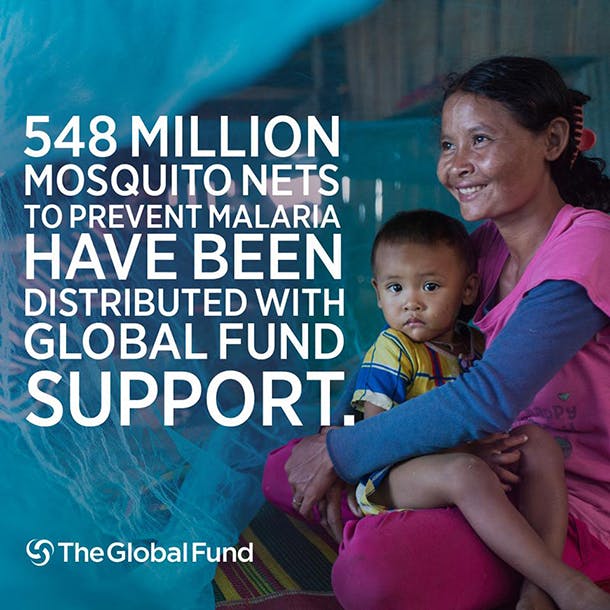
Last month in Montreal, governments, the private sector, and foundations came together to make a powerful investment for a better world. Most of these investors will never see a direct return on investment to themselves; this venture will pay dividends to families and communities around the world.
The nearly $13 billion pledged to the Global Fund to Fight AIDS, TB and Malaria is not just a demonstration of generosity. This investment is expected to drive US $290 billion in economic gains. That is $22 for every dollar invested – a rate of return which would delight any investment banker.
Beyond economic gains, US $13 billion is expected to leverage US $41 billion in additional domestic investments for health as countries are required to invest in their own health systems in order to unlock the Global Fund contribution.
But the fruits of this investment go beyond the balance sheet. AIDS, tuberculosis (TB), and malaria are three of the world’s most deadly diseases. This funding is estimated to save 8 million lives from AIDS, TB, and malaria over the coming 3 years, bringing total lives saved by the Global Fund partnership to 30 million-32 million by 2020.
It will also avert 300 million infections, which will protect families from around the world from experiencing the physical, emotional, and financial hardships commonly inflicted by these three diseases.
The Global Fund has shown its capacity for achieving impact in the past. In most countries where the Global Fund invests, the Millennium Development Goal target of reversing the spread of HIV, TB, and malaria was met and exceeded, with the number of people dying from these diseases declining by one-third in Global Fund-financed countries.
The Global Fund will fuel progress on the Sustainable Development Goals, not just for AIDS, TB, and malaria, but also other priorities that will improve the health of populations around the world.
- The Global Fund strategy promotes gender equality as a high-level strategic objective. Currently, 60% of Global Fund investment is directed toward girls and women.
- To address the root causes of the inequalities in education, reproductive health, and family planning that put women and girls at greater risk for AIDS, TB, and malaria, the Global Fund has partnered with the Global Partnership for Education, UNFPA, and UNICEF to ensure that their programs can integrate service delivery and focus on the person, rather than the disease.
- The Global Fund contributes to universal health coverage by expanding access to essential health services, with a strong focus on HIV, TB, and malaria. It invests in resilient health system so that countries are able to respond to health needs beyond the three diseases and address health emergencies, like Ebola.
While we celebrate this accomplishment, we must not become complacent. This $13 billion target was based on only 80% of the need for AIDS, TB, and malaria financing.
Every additional $100 million contribution to the Global Fund would save up to 60,000 lives through programs supported by the Global Fund, avert up to 2.3 million new infections across the three diseases, and spur US $2.2 billion in long-term economic gains. And you can contribute. You can donate to the Global Fund to Fight AIDS, TB and Malaria here.



 View All Blog Posts
View All Blog Posts